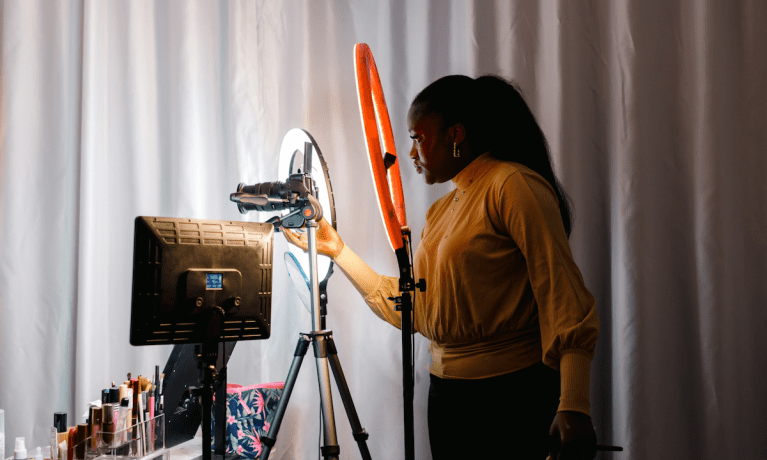
G.R.W.M. (that’s “get ready with me”) for a major change in the social commerce landscape, because the pending TikTok ban in the United States could be make-or-break for all the brands that have built their following on the platform.
TikTok has become a powerful force for brands trying to reach shoppers online, especially younger generations. The 2023 PYMNTS Intelligence report “Tracking the Digital Payments Takeover: Monetizing Social Media,” created in collaboration with Amazon Web Services, found that 43% of consumers looked for goods or services on social media in the previous month, and 14% used these platforms to make a purchase.
Additional research from the study found that, when looking specifically at Generation Z, those shares jump up to a whopping 68% for the former and 22% for the latter. Plus, 37% of Gen Z engaged via TikTok, making it the second most popular social commerce app for the generation, behind only Instagram.
Plus, they liked the experience. The study found that 86% of consumers making purchases through social media said they were very or extremely satisfied making purchases this way.
Now, with the TikTok ban looming in the future, pending the results of ByteDance’s legal efforts to fight the legislation, brands that have built their following on the platform have to figure out how to survive the shift. Brands that have invested time and resources in building a following on TikTok could see a sudden loss of access to their audience. This could affect their ability to communicate with their followers and potential customers, potentially impacting brand visibility and engagement.
“I think it would present new challenges for us as a small business, once the TikTok ban comes into effect,” Fiona Co Chan, CEO and founder of Youthforia, a skincare brand with 190K+ followers on TikTok, told PYMNTS.
Yet, she noted, with or without TikTok, the app’s effects on the social commerce landscape will remain.
“I think what won’t change is style of content that Tiktok introduced to audiences around the world — quick, engaging, informative content that gets straight to the point,” she said.
Yet changes in the social commerce landscape have always been part of it for brands that have built their following on these platforms, with changes to the algorithms demanding constant flexibility.
“Monetization efforts have already changed in the last few months, with TikTok changing its focus to be on videos over 1 minute long, which take more time to put together as a content creator,” Nadya Okamoto (4.1 million followers on TikTok), CEO and co-founder of August (363K followers), explained to PYMNTS.
In response to such a ban, brands may need to quickly pivot to alternative platforms to maintain their online presence and reach their audience. This transition could require additional resources and time to rebuild a following and adapt content for new platforms.
“In case of a potential ban, I definitely will keep focusing on building platforms on other channels,” Okamoto said, adding that, where once she spent 90% of her time on TikTok, recently she’s reduced that to half, dedicating the other half to content “across Instagram, Youtube, Snapchat, Threads.”